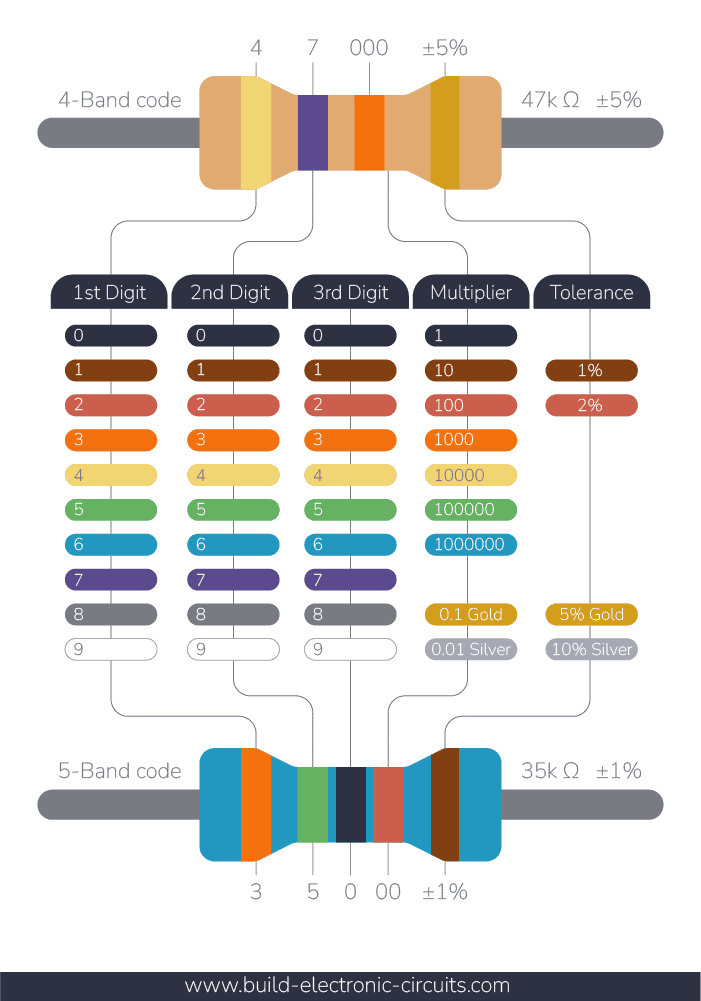The resistor color code (color bands) on your resistor tells you what value the resistor has. There are usually 4 or 5 bands. Use our simple resistor color code calculator tool below to easily find the value of any resistor.
The color bands on your resistor tells you what value the resistor has. Click on a color band below to change its color and the value and tolerance will automatically update to the correct value.
Experiment with the tool above by clicking on a color band to change its color. Then see the resulting value and tolerance. If you want to know what each color and resistor color band represents, check out the table below.
Resistor Color Codes Table
You can find the color bands and the values they represent in the table below:
Further down this page, you’ll find examples of how to use the color table.
Bookmark this page and print out the table below to quickly find the resistor color codes when you need them.
[Click here to download the resistor color codes PDF]
How To Use The Resistor Color Codes Table
In the resistor color codes table, you have digits, a multiplier, and a tolerance.
The multiplier tells you what you need to multiply your digits with to get the value. The tolerance tells you how accurate this value is.

10 Simple Steps to Learn Electronics
Electronics is easy when you know what to focus on and what to ignore. Learn what "the basics" really is and how to learn it fast.
If your resistor has four color bands:
- The first two bands give you the digits
- The third band gives you the multiplier
- The fourth band gives you the tolerance
If your resistor has five bands instead of four, the first three bands give you the digits. And the following two give you the multiplier and the tolerance.
Example #1

This resistor has four bands. The colors of the bands are yellow – purple – orange – gold.
From the table above we find that this means:
- Digit 4
- Digit 7
- Multiplier 1000
- Tolerance 5%
47 multiplied by 1000 is 47000.
So this is a resistor with 47000 Ω (47 kΩ).
A tolerance of 5% means that the real value could be 5% higher or lower than 47 kΩ.
Example #2

This resistor has five bands. The colors of the bands are orange – green – black – red – brown.
From the table above we find that this means:
- Digit: 3
- Digit: 5
- Digit: 0
- Multiplier: 100
- Tolerance: 1%
350 multiplied by 100 is 35000.
So this is a resistor with 35000 Ω (35 kΩ).
A tolerance of 1% means that the real value could be 1% higher or lower than 35 kΩ.
More Resistors Tutorials

10 Simple Steps to Learn Electronics
Electronics is easy when you know what to focus on and what to ignore. Learn what "the basics" really is and how to learn it fast.


